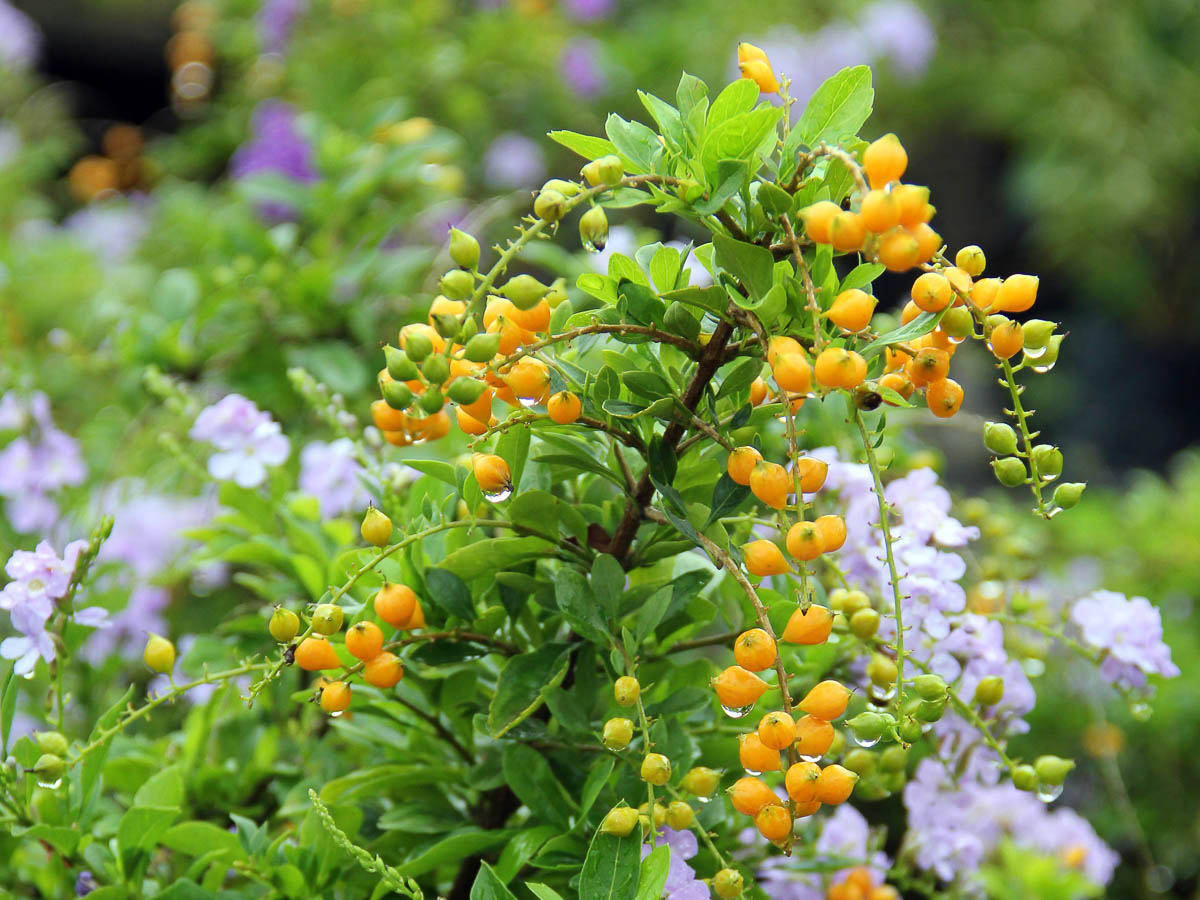Golden Dewdrop
Golden Dewdrop (Duranta erecta)
Other Common names: Golden Dew-Drop, Lilac-flowered Golden Dew-Drops, Pigeon Berry, Sky Flower, Brazilian Sky Flower, Kachang Puteh, Forget-Me-Not, 金露花, 假连翘, 小本苦林盘

Golden Dewdrops are large, hardy, free-flowering shrubs that are commonly seen in roadside gardens, perimeter planting and biodiversity-attracting gardens. The blue nectar-filled flowers are highly attractive bees and butterflies, and the hard, bright yellow fruits are very visually attractive.
A perennial shrub, Golden Dewdrops are useful as a biodiversity-attracting plant and perimeter plant to add a pop of colour to any garden.
Sun and soil needs:
_jacquelinechua.jpg)
This plant thrives in 4-8 hours of direct sunlight. It can also grow in 4-6 hours of indirect sunlight, but at a slower pace with less flowers. Plants do best in pots with loamy soil at least 20cm deep, or in true ground. These plants are vulnerable to root rot, so ensure that your pots drain well, and that your soil has plenty of organic matter to let the roots breathe.
Growing:
Golden Dewdrops are a steady grower and does well with monthly fertilising with a balanced fertiliser. This shrub can grow up to 2.5m in height but is usually maintained anywhere between 30cm-1.5m tall as small shrubs or hedges. Regular pruning is needed to promote new growth that will keep the plant healthy and neat.
Propagation:
Golden Dewdrops can be grown from seed or woody stem cuttings with rooting hormone.
Common problems & solutions:
If your plant has few to no flowers, you can fertilise the plant with fertilisers high in phosphorus and potassium. These nutrients encourage root and flower growth, which are important for the plant to produce more fruit.
If the plant does not receive enough light, it will stop producing flowers. Prune surrounding plants or move the plant to a sunnier spot to promote flower growth.
Mealy Bugs and Scale Insects often infest the plant if it has underlying problems like repeated wilting from heat stress. Mechanical pest control methods like pruning the infested parts are the best methods for managing these pests in the short term, but resolving the underlying problem will prevent them in the long term.

